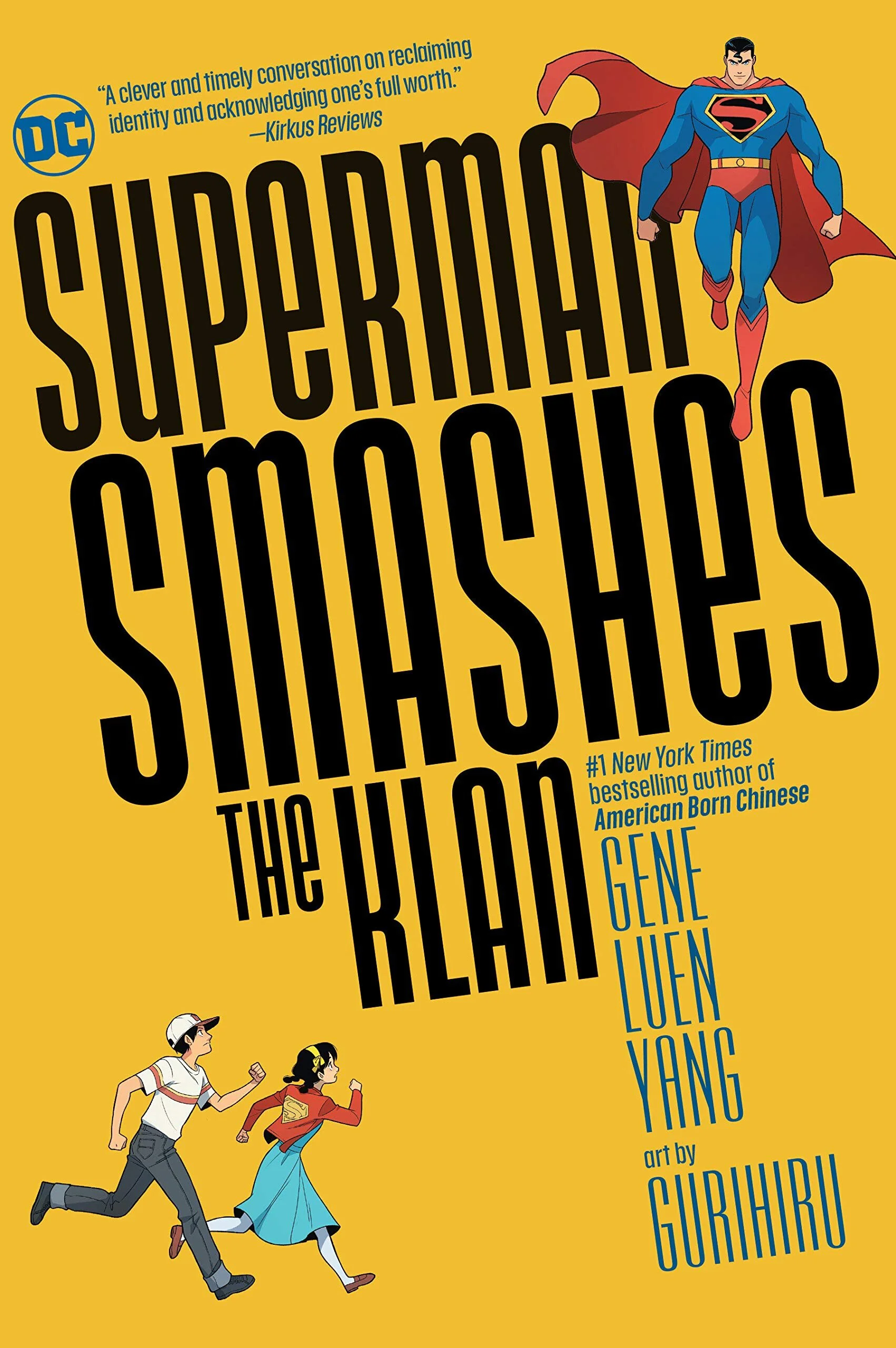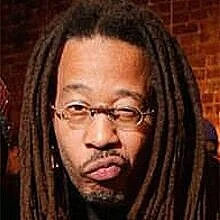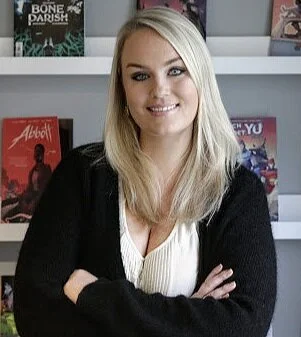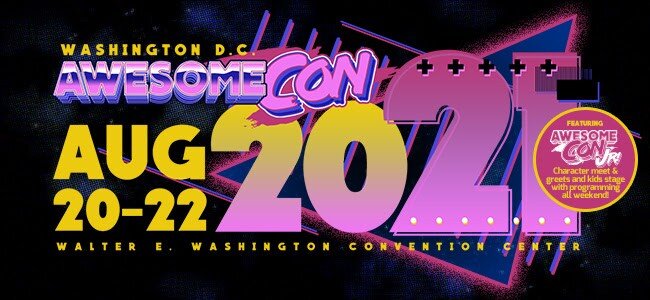SDCC@Home 2021: This Was For The Culture
Joseph Watkins Da Watcher
Running from July 23rd to 25th, San Diego decided to run the famed online event again for 2021 and I was here for the festivities. Once again confessing, I’ve never been to the famed San Diego Comic Con @ San Diego Convention Center to see the cosplay, panels and of course revel in the afterparties, but if this is going to be the closet I’ll get to the Mecca of Comic Cons, so be it. I’ve attended SDCC online last year and had a blast meeting with staff, buying merch, so this year wouldn’t be any different. However, rather than just do the panels, like always, I decided to do a lot more this year. After all, this might be the last time SDCC exists online so I wanted to take a look at what the GODS did this time and highlight as many achievements as possible.
Drip Merch Missed
The merch store for SDCC collectibles always provided, but there was one item that I was hunting for, the limited edition SDCC hoodie. With Hoodie season approaching, pop culture hoodies are always best in the fall and winter, and I wanted to be prepared for it., but as I scrolled down to find the famed black apparel, I saw the words that always informs you that you’re too late: SOLD OUT.
Damn…I missed it….The Pain, the hurt. Still, it didn’t stop me. I decided to look to the summer instead and bought a blue tie dyed shirt instead. Still, I wanted that damn Hoodie.
Watch Party: Go Go Godzilla
With the epic cosplay and personal meetings left to the digital environments, I decided to explore scener a little bit earlier to see what anime was playing and join in on the festivities. This time I decided to explore the Kaiju arena and view the world of Godzilla: Singular Point. Looking at the animation, compared to the previous Godzilla films, the show is a fresh take on the famed lizard series, absent the lizard. SDCC blessed us with episodes 1-5 to watch and it was pretty good. Although, I’m not an expert in Kaiju like my fellow writer Josh, it would’ve been nice to see Godzilla more in the series. I also got a chance to meet one of the moderators, Ryan. Corny I know, but he still gets a shoutout for protecting the scener realm.
The Eisner Awards: Academy Awards for Creators
This is my first time discussing the Eisner Awards and I need to apologize to the Pop Culture GODS for this. As a writer for diversity and Pop Culture, I can’t believe I haven’t been here before, but this time at the 33rd Annual Will Eisner Comic Industry Awards, I decided to experience the ritual.
Hosted by Phil LaMarr, these awards were a tribute and a thank you for the great work these creatives are doing in the world of pop culture. One category that I gravitated to was the Best Academic/Scholarly Work category and the artists that took home some of the accolades were the creatives Gene Luen Yang and Gurihiru in Superman Smashes the Klan.
Academic and Scholarly Work of Rebecca Wanzo
Rebecca Wanzo
Professor Rebecca Wanzo was the winner of the 2021 Eisner Award for Best Academic/Scholarly Work. The Professor Chair and Professor of Women, Gender and Sexuality Studies at Washington University in St. Louis, her work focuses on African American Literature, History and Culture, Pop Culture, Critical Race Theory and Feminist Theory.
Her book, The Content of Our Caricature: African American Comic Art and the Political Belonging explores how racialized caricatures have led to the alienation of African Americans from citizenship using imagery. Additionally, her research also discussed how African American cartoonists have used these same stereotyped images of African Americans to comment on the history of racism that exists in African American life as well. Her research doesn’t demonize them (the Black cartoonists), but rather, highlights them as they tackled those same issues and how they took ownership of the imagery. Her work focused on the artistic talents of Sam Milai, Larry Fuller, Richard “Grass” Green, Brumsic Brandon Jr., Jennifer Cruté, Aaron McGruder, Kyle Baker, Ollie Harrington, and George Herriman. Seeing this, I thought of the cartoonist Keith Knight and the Hulu series Woke. As Keith discovered police brutality for the first time, his response to the issue and being a Black man in modern day society was by creating comics that highlight the issues taking place. Caricatures, it appears is the medium for displaying racism, inequality and injustice through a comedic lens. Unfortunately, it comes with a cost: The Truth. And while some look at the work through a deeper lens, some brush it off as just plain satire. This was one project, I felt, was worth reading so I ordered a copy to further understand how race and cartoons are intertwined and how taking ownership of the caricatures leads could lead to growth and understanding of African Americans.
Superman Smashes the Klan
Written by Gene Luen Yang and drawn by Gurihiru (Chifuyu Saski & Naoko Kawano), this work is derived from the 1940s radio serial, “Clan of the Fiery Cross” in which Superman went toe to toe with the KKK. Without spoiling the action, the story’s focus is on how two individuals try to assimilate in 1940s Metropolis during a period of Racism and Intolerance. One of those individuals was Superman, while the other was Lan-shin Lee, aka Roberta, an Asian-American who moved to an all-White neighborhood in the alleged “good” part of metropolis. Created by MacArthur Fellow, Cartoonist Gene Luen Yang and drawn by the two-woman Japanese illustration team Gurihiru, they made a gem of a graphic novel and I recommend everyone should read this to understand how Asian Americans to, underwent Racism and Intolerance. Nicely Done.
Panels: Exploring Culture and Dynamics
For SDCC 2021, I decided to go beyond my comfort zone and examine pop culture from a multitude of genres. I decided to journey into the realm of Hip-Hop, explore the feminine side of business, explore Latinx pop culture with some great creatives and examine the Blerd writers of Black Nerd Problems.
Hip-Hop and Comics: The Beginning.
Eric Orr
The line between Hip Hop and comics has always been intertwined, but SDCC highlighted the first time they actually merged. This Nexus Event first started with New York City’s own Artist and Designer, Eric Orr. Moderated by Patrick A. Reed; historian, journalist, curator and marketing consultant for Marvel, his panel was a dedication to the 35th anniversary of the 1st Hip-Hop comic ever produced: Rappin Max Robot #1; A self-produced Black and White publication created by Orr himself.
For the unfamiliar, Eric Orr is an artist from NYC, who is one of the pioneers of graffiti visual iconography. His expressionist style led him to the creation of his famous robot head and the creation of his alter ego.
The panel had a cast of artistic intellectuals and creators, but what was truly inspiring were the words of Dart Adams and how Hip Hop transformed fashion and music such as Lee jeans, Adidas and turntables:
Dart Adams
“Hip Hop is a genre, it’s a discipline, it’s an art form, that typically repurposes things and makes them Hip Hop. Lee jeans were not made for B-Boys, B-Boys did what they did with Lee jeans and made them Hip Hop. Adidas, on their own weren’t made for Hip Hoppers, Hip-Hoppers, made Adidas HipHop. The Technic turntables were not made with Hip Hoppers in mind, it was the Hip Hoppers that transformed it. So, in a world where we read comic books that weren’t really thinking about us or weren’t aimed at us, we repurposed it and gave it new meaning, and changed what it meant and who it appealed to. But this [Rappin Max Robot] was made specifically for this audience in mind by someone who is from that audience and grew up in the culture, so that changes everything.”
Patrick Reed
With Dart Adams words, followed by Eric Orr’s character, I couldn’t help but think about another type of emergence between Hip Hop and Comics: The Marvel Hip Hop Variant Covers. Created by various artists, each cover was a heartfelt thank you to the Hip Hop industry, yet, each cover contained a deeper meaning. As each cover reflected a Hip Hop album that represented America’s rejected class, I felt that those comics were also a salute to the Black and Brown individuals who listened to the music. My only hope is that the continued blending of Hip Hop and Comics doesn’t dilute the overall message of both the music and the comics themselves. The new aesthetics are great, don’t get me wrong, but future readers might miss the message and the imagination it took to create the Hip-Hop-Comics lane in the first place. Only time will tell. Salute to Eric Orr for being the Nexus Event and Patrick A. Reed for the research.
Hip-Hop And Comics: Cultures Combining | Comic-Con@Home 2021
Tiffany Smith
Entertainment is Female
The next panel showcased the entertainment industry with the phenomenal women whose decision making led to the creation of various projects like Spider-Man: Into the Spider-Verse, The Walking Dead, Lumberjanes, and Star Wars: The Rise of Skywalker. Moderated by actress, Tiffany Smith, they discussed the ins and outs of the entertainment industry, its development process and how they acquired and used Intellectual Property (IP) during the pandemic.
Panelists included into the discussion were:
Jeannette Francis, Film Executive at Bad Robot
Sam Crawley, Director of Development at Skybound Entertainment
Aubrey D. Lee, VP of TV Development and Production at Lord Miller
Grey Cusack, Director of Feature Film Development at Columbia Pictures
Nikki Baida, VP of Production and Development at Lord Miller
Mette Norkjaer, Creative Director of BOOM! Studios.
During the Covid Pandemic, one of the biggest issues affecting Hollywood was incorporating new content for the media. Whether for TV, movies, or streaming services, finding the right stories for development became problematic as face to face interactions became dangerous and those interactions transitioned to zoom meetings and google hangouts. Mette, creative director for Boom! Studios, offered her take on the matter:
Mette Norkjaer
“Mining the library that we have, you know, we have a gigantic library full of incredible stories from creators from all over the world. So, it’s a lot of being familiar with what’s in that library and figuring out what makes the most sense to be pursuing at this moment, you know given the time we’re in and what buyers are looking for. It’s like what Grey [Cusack] was saying, it’s like, ‘okay, we know so and so is looking for this kind of material’ and we kind of go through our library and say, ‘ well maybe this could be something’, and other times it’s just if we get a new graphic novel in, which happens a lot, and we thinks it’s incredible, then we’re like, ‘this is a no brainer. We have to run with this’ and then sometimes we bring on a producing partner, other times we just produce by ourselves and then you know, we’ll try to put a pitch together and take it out.”
During the pandemic, streaming sites were the medium for primetime entertainment. As many gravitated to the theaters of their homes, new and interesting content started to manifest and with that, so did the profits, with revenues reaching the billions; approximately 24.1 billion to be exact with authentic storylines leading the way.
Entertainment is Female: A Conversation with Hollywood Executives | Comic-Con@Home 2021
Prof. Fredrick Luis Aldama
Abolishing Latina Stereotypes.
My next panel led me to the world of Latinx and the abolishing of the Latina stereotype. Here they discussed how the term, Latina, once used as an oppressive gender term, is now being used as a symbol of equality through comic book and graphic novel storytelling. Incorporating a phenomenal cast of creators:
Kayden Phoenix: Creator and writer of La Barava, Universe of Latina Superheroes. She’s also an award-winning film Director of Phoenix Studios.
Dr. Drea Letamendi: Clinical Psychologist, Interim Director of the UCLA Resilience Center where she develops, innovates, and oversees projects aimed at bettering mental health and providing wellbeing practices for a community of 45,000. She’s also served as a mental health consultant for U.S. media corporations including Fandom, Marvel, Warner Bros., and Riot Games.
Amanda Julina Gonzalez: Animator and Voice Over artist. Her specialties are in story building, character design, digital animation and common art. She currently works for Wicked Saints Studios as a Storyboard Artist.
and moderated by the World-Famous Professor Latinx, Prof. Fredrick Luis Aldama, who is the Jacob & Frances Sanger Mossiker Chair in the Humanities at the University of Texas as well as the Adjunct Professor and Distinguished University Professor at Ohio State University, the panel discussed how storytelling through the comic book industry provides a great way to change the narrative about various cultures. Through Teaching and Role Modeling, Dr. Drea also expressed how these informative principles are necessary for changing the personal narrative.
Dr. Drea Letamendi
“There are two aspects of this that I enjoy. One, is the response I get from young learners and young professionals. For the most part, a lot of what I do at UCLA is student facing and whether it’s a workshop on How to Deal With Pandemic Stress or a seminar, dialog on Racial Healing. What I try to do is build connection and community among the young people that I work with. But I noticed that the responses I get, often privately, will say things like, ‘Thank You for representing a culture that I don’t often see’, especially for Latina 1st generation students, they’ll tell me, ‘Because I see you in a place of visibility, in a place of empowerment, in a place where I feel you’re making decisions and you’re a part [of it], you have a seat at the table’, that response has been incredibly powerful, because they not only see themselves in these roles of leadership, but they also feel this sense of validation, ‘You belong here, you’re a part of this community, just like your White counterparts.”
Dr. Drea’s statement highlights how the physical representation in professional fields are underrepresented by various racial groups and by filling that gap, a new diverse group of specialists and authority figures can emerge from that endeavor. Furthermore, she also exemplifies the growing need for a more diverse workforce as well. Sometimes, just being present, sitting at the table, can bring a better vision to the viewer, demonstrating that I, too, can be like them as well.
This panel also discussed how the media shaped their views as both a Latina and a woman in the media industry, with Ms. Gonzalez offering a viewpoint that almost broke my heart. This panel showed me a different aspect of Latin culture I never knew existed, and I was forever grateful for this panel and their experiences.
Abolishing Traditional Ideas of Latinas through Latina Superheroes | Comic-Con@Home 2021
Black Nerd Problems: The Holy Grail of Blerddom
Blerds have the ability to analyze pop culture, but through a Black Lens. For example, The Blerdgurl, Karama Horne is an unofficial “plug”, to the Blerd Universe and as with all universes, there are multiple galaxies to choose from. In the case of the Blerd universe, there are also different galaxies of Blerd pop culture to choose from.
With Black Nerd Problems, founders William Evans and Omar Holmon, created a galaxy that encompasses prose from the Blerd perspective. From Black Lives Matter to the extended timeline of the Marvel Universe, their own galaxy, which is considered, by Black twitter and others, to be one of the best galaxies to visit, has now been transcribed for our viewing pleasure in their upcoming book, Black Nerd Problems: The Essays. Based on the growing frustration of how pop culture, from comic books to video games, were covered by the White perspective, they’re authentic voices are a testament to how “real” one can get when one is silenced, when one is passionate about a subject, and when one wants to spit FACTS ABOUT RACISM.
William Evans and Omar Holmon are some of the GOATs within the Blerd universe and I predict their book will be a New York Times Bestseller with the possibility of it winning the 2022 Eisner Award next year.
Also, if I ever get to meet them, I’ll never mention Batman…. EVER!!!
Black Nerd Problems | Comic-Con@Home 2021
Final Thoughts
SDCC@Home 2021 provided, once again, an eye-opening experience that allowed me to explore outside my comfort zone in the realm of pop culture. For me, I learned the importance of the Eisner Awards, the power of comic books and Hip Hop, the female entertainment industry and their search for IP greatness, and the power of being a Black nerd with a pen. As SDCC continues to deliver, even in the midst of a recovering economy, climate change and a post pandemic recovery, I hope that they will continue to have both a physical and online component for 2022 so all can attend this experience a learn something new about pop culture and its many diversified fields.
Thank you again for another great season!!!












